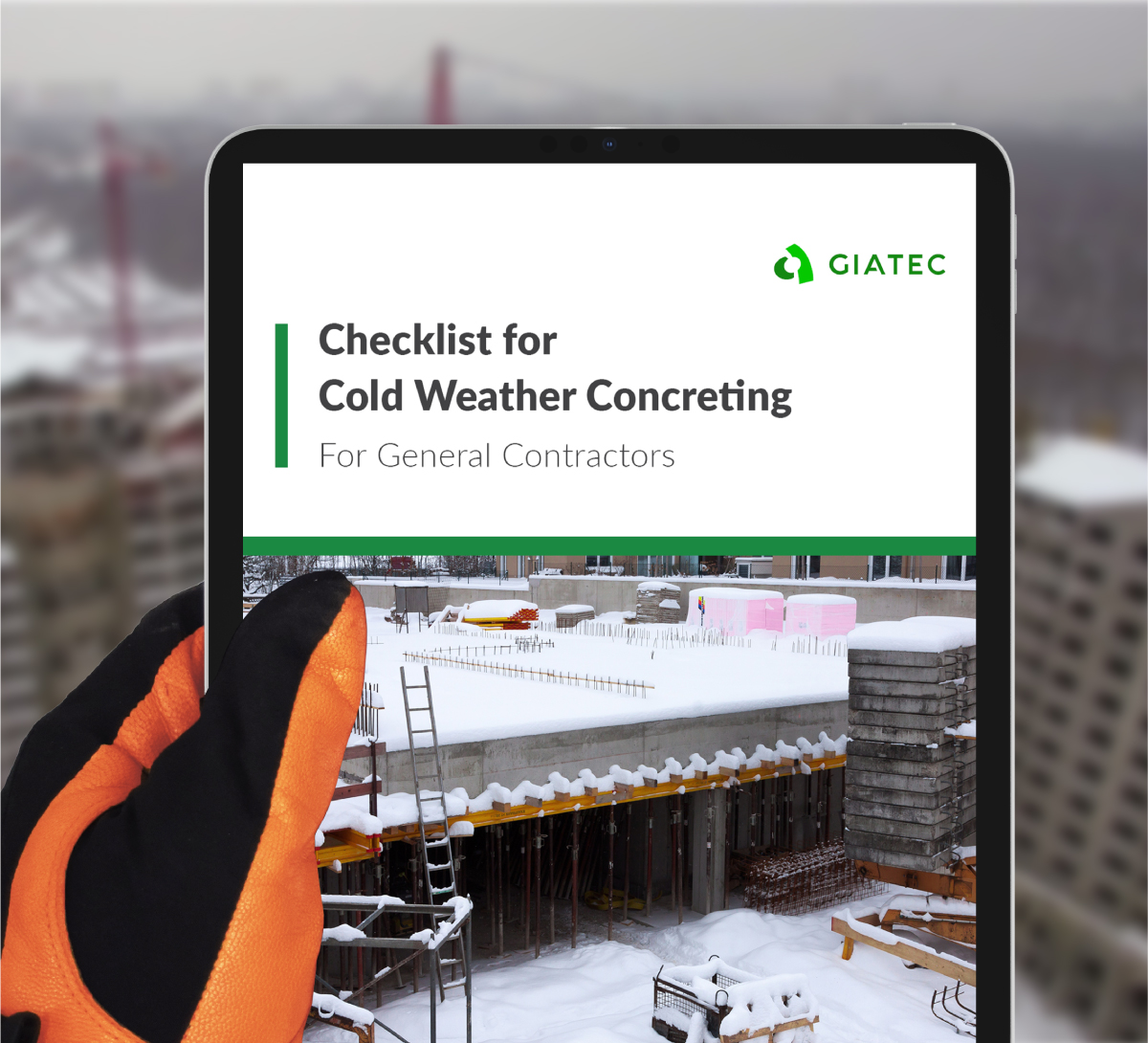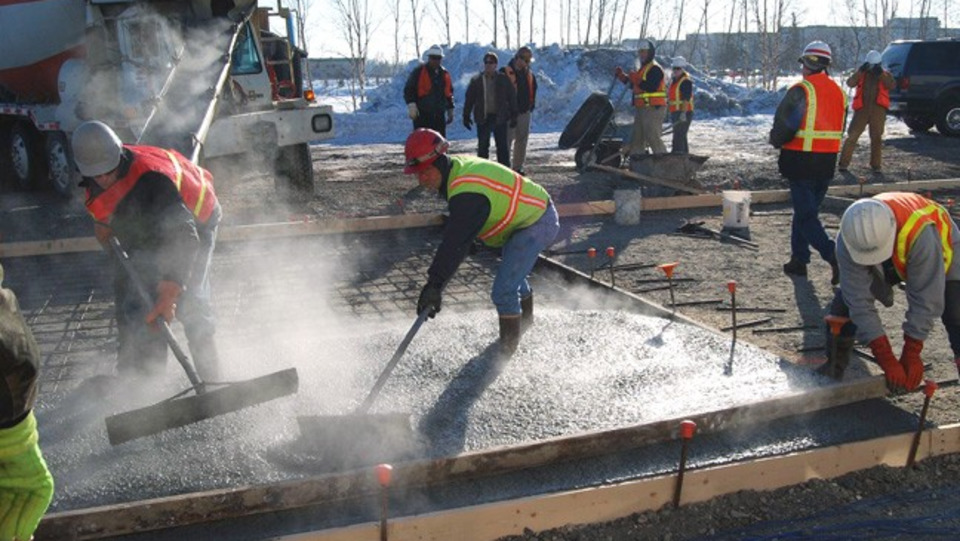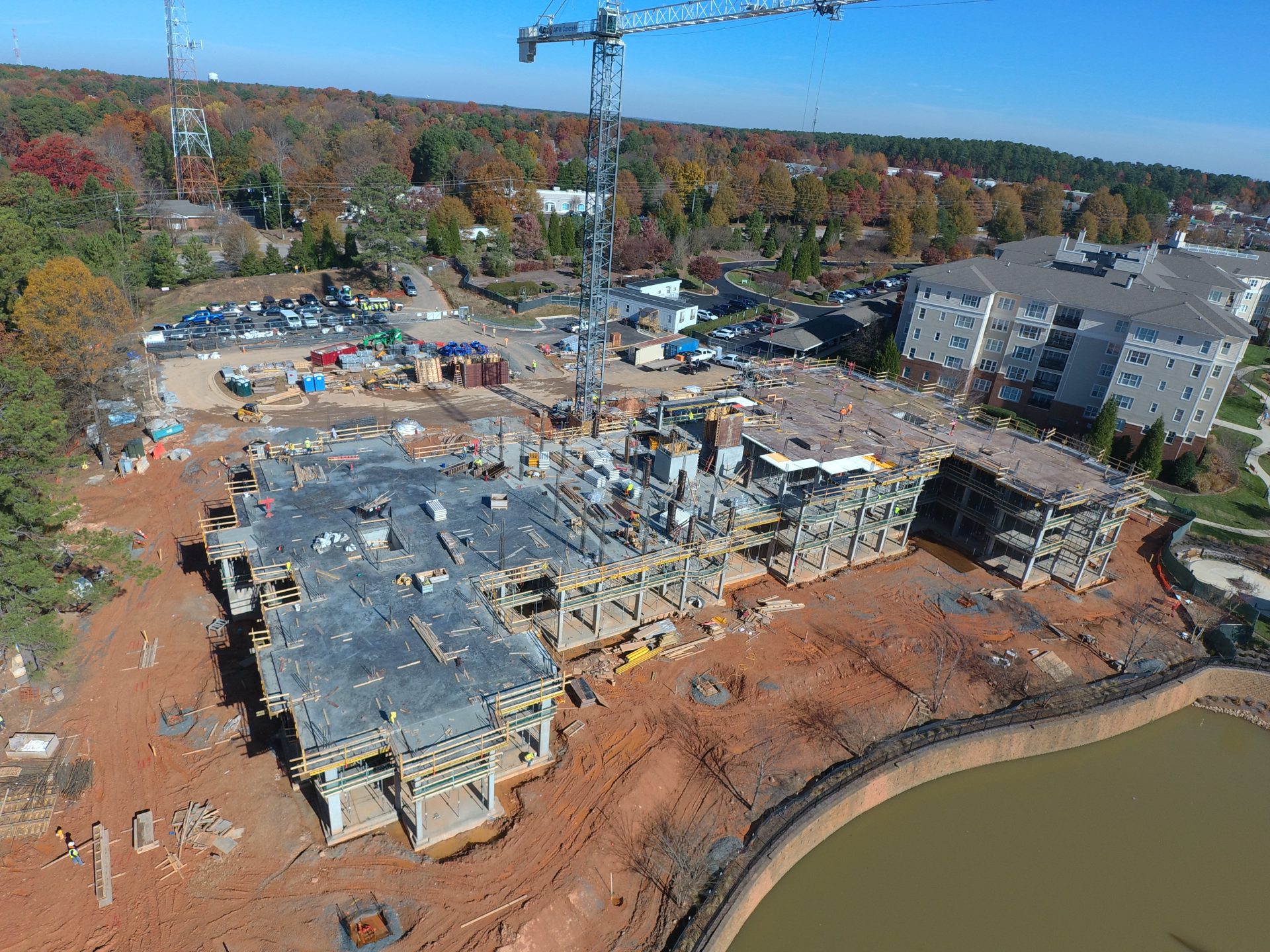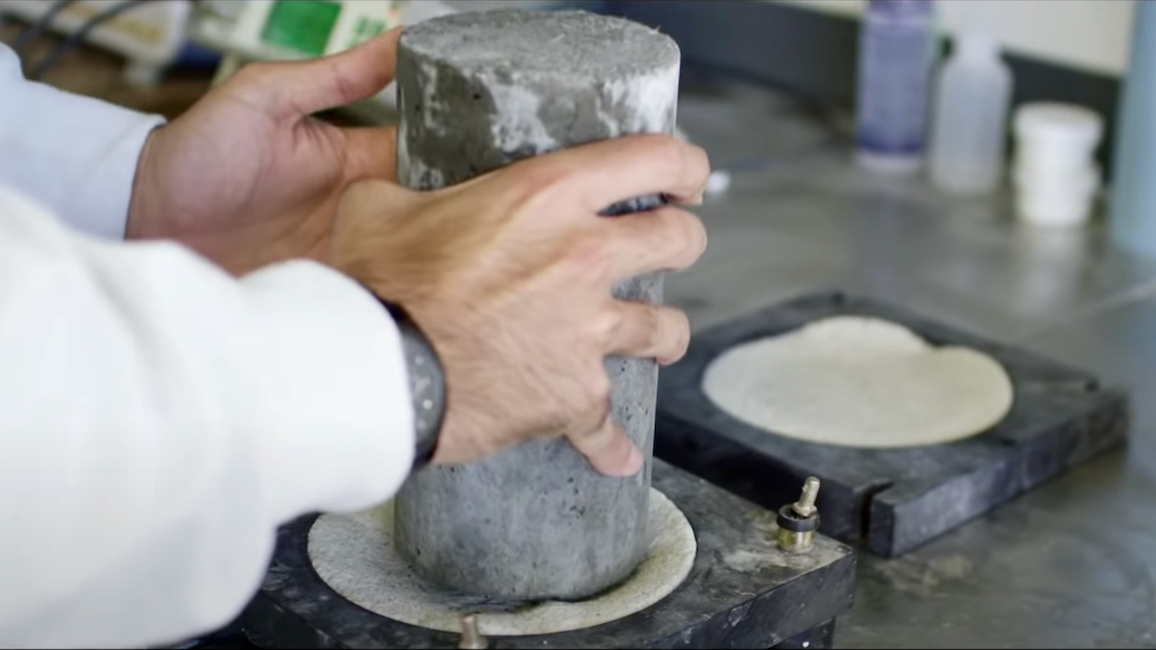Cold weather concreting presents a range of challenges for contractors, particularly when working in very low-temperature environments. One of the primary challenges is the effect of temperature on the concrete’s setting and curing process. As temperatures drop, the hydration process of concrete slows down significantly. This delayed setting and strength gain can lead to construction delays, impacting project schedules and budgets. Engineers must carefully monitor and manage the concrete’s temperature during the placement and curing phases. This ensures the concrete achieves the desired strength and durability. Here are a few important considerations when we are preparing concrete in cold weather.


Download the full Checklist now and experience smoother, stress-free cold-weather concreting like never before.
How temperature monitoring is right for your cold-weather projects!
Another significant challenge is the potential for freezing temperatures. If concrete is subjected to freezing conditions before it gains sufficient strength, it can lead to severe damage. Freeze-thaw cycles can cause internal cracking and spalling, compromising the integrity of the structure. One can apply several important measures to protect freshly placed concrete from freezing. They can include the use of insulating blankets or the application of external heat sources to maintain the desired temperature. This necessitates careful planning and coordination to ensure the success of the cold weather concreting process.
Additionally, cold weather conditions can result in thermal cracking. Rapid temperature fluctuations, particularly day and night, can induce thermal stresses in the concrete, leading to cracks. These cracks not only affect the structural integrity but also reduce the concrete’s aesthetic quality. To mitigate these challenges, it is crucial to follow a detailed checklist that guides you through all stages. By adhering to the provided checklist and taking appropriate precautions, contractors can minimize the adverse effects of cold weather concreting and deliver high-quality concrete to their clients.

Before Pouring
When it comes to pouring concrete in cold weather, careful preparation is the linchpin for assuring the quality and durability of the structure. This groundwork starts well before concrete delivery to the site. It involves various vital factors that deserve attention from the very beginning.
Placing concrete on a frozen surface can result in inadequate bonding and potential frost-related damage. Contractors might employ various methods, including snowplowing, heaters, and de-icing chemicals to ensure a pristine foundation for the concrete. Maintaining the right temperature environment is equally critical. Cold surfaces can rapidly draw heat from freshly placed concrete, jeopardizing proper curing. In this stage there are many heating methods, from electric to propane heaters that help maintain the ideal temperature in formwork and surroundings, allowing the concrete to set and cure as intended.
Optimizing the Concrete Mix Design Is Essential
There is a need to carefully adjust mix proportions and incorporate specific admixtures to enhance cold weather performance. Furthermore, optimizing the concrete mix design is not just a matter of cold weather workability but also about tailoring the mix to the anticipated temperature fluctuations.
Planning, monitoring, and careful procurement of concrete materials round out the particular preparation. Such aspects involve assessing weather forecasts, adjusting work schedules in response to temperature fluctuations, developing comprehensive cold-weather concreting plans, and establishing vigilant monitoring procedures. Another important point is the proper storage and protection of concrete materials. This is because exposure to freezing temperatures can negatively impact concrete quality and performance. Contractors can implement insulation and heating methods to maintain materials at the desired temperature.
This thorough preparation, involving a spectrum of some important measures, forms the bedrock upon which successful cold-weather concreting projects are built.
Read this blog to learn more about devices and tools for more efficient cold weather concreting.
During Pouring
In cold weather concreting, an in-depth understanding of the temperature gradient and its impact on the concrete’s behavior is vital. The knowledge of the temperature gradient helps in selecting suitable admixtures and proportions that minimize the risk of frost-related damage. Additionally, when it comes to the during-pour phase, monitoring the concrete temperature becomes an intricate task. In-depth knowledge of the gradient enables engineers to precisely gauge and maintain the concrete’s internal temperature. This is particularly crucial because overly rapid temperature changes can induce thermal stresses that may lead to cracks. Advanced technologies, such as maturity sensors, might be used to continuously monitor temperature variations throughout the concrete mass, helping to adjust heating systems, admixture dosage, and insulation accordingly.
How Does a Temperature Differential Cause Cracking?
The concrete temperature gradient, signifying the temperature contrast between the core and external surface of a mass concrete element, critically influences the structural integrity and service longevity of the concrete structure. As stipulated by ACI 301-16, Specifications for Structural Concrete, it is imperative that the concrete temperature gradient does not surpass 35 °F (19 °C) during the curing process. While this guideline is typically conservative, there are instances where it may represent an overestimation of the permissible thermal gradient.
The act of pouring concrete generates heat through an exothermic reaction during the hydration process, contributing to an elevation in the overall temperature of the concrete element. Generally, a higher cement content correlates with increased heat generation. However, when the external environment experiences lower temperatures, the mass concrete’s exterior undergoes cooling, while the core maintains a higher temperature. This phenomenon is exacerbated in extreme weather conditions. The temperature differential induces volumetric expansion in the core, concurrently causing contraction in the exterior due to its lower temperature. Consequently, these opposing forces generate internal tension. If this tension surpasses the concrete’s tensile strength, it results in the occurrence of thermal cracking.
Optimizing Concrete Strength: Maturity Testing and Temperature Control
In the past, obtaining the actual in-place strength was a challenge, but with recent developments in technology, using concrete maturity testing to determine the in-place strength has become a lot easier. By measuring the in-place strength based on the maturity value, it is possible to determine the actual temperature differential allowed to prevent cracking. The following temperature difference limit equation can be used:
Temperature Difference Limit (°F)`= (f’t)/(E*CTE*R*C)`
The tensile strength, denoted as f’t, can be monitored on the surface of the mass element through the application of the maturity method. This necessitates the completion of a maturity calibration before the pouring process. In this context, “E” denotes the modulus of elasticity, and “C” represents the creep factor, which can be conservatively assumed as 1 and “R” is the Restraint factor (0 = unrestrained; 1 = full restraint). The AASHTO T336 test can help determine the coefficient of thermal expansion (CTE). For further guidance on obtaining these factors, detailed information is available in ACI 207.2R.
After Pouring
The primary objective in cold weather concreting is to ensure the structural integrity of concrete structures even in adverse conditions. This goes beyond the initial pour and extends into the post-pour phase, demanding monitoring of temperature fluctuations within the concrete. By maintaining a close watch on temperature variations, contractors effectively mitigate the risk of thermal cracking, a common challenge faced in cold climates. The capacity to enact immediate modifications to heating and insulation techniques is instrumental in keeping the concrete within the specified temperature range, thus upholding its strength and durability.
The utilization of concrete maturity sensors such as SmartRock® enhances this monitoring process. These sensors provide valuable data on the concrete’s maturity and strength development throughout the post-pour phase. Engineers gain a precise understanding of the concrete’s progress, enabling informed decisions on crucial factors like formwork removal, the application of post-placement curing methods, and the readiness of the concrete for subsequent construction activities. This dynamic approach, combining temperature monitoring and maturity sensors, is instrumental in cold weather concreting, where temperature control is a persistent challenge.

In conclusion, cold weather concreting presents unique challenges that demand a meticulous and systematic approach. Temperature monitoring throughout the process is fundamental. It enables the early detection and prevention of issues such as thermal cracking. This checklist helps us ensure that the concrete meets its strength and durability requirements. This ultimately leads to the successful completion of construction projects in cold weather conditions. The combination of preparation and monitoring provides the necessary precision and care for a reliable and resilient outcome.










